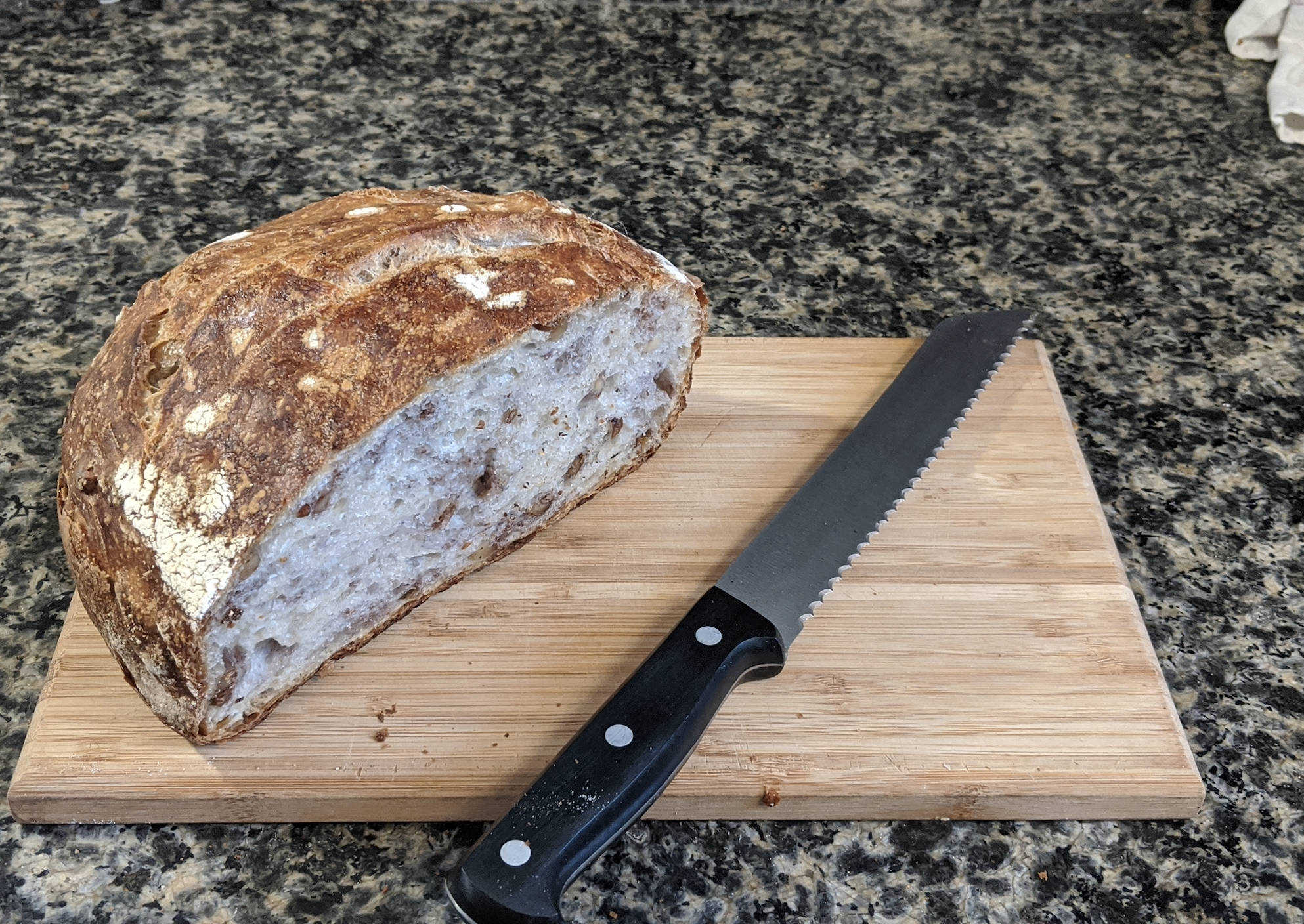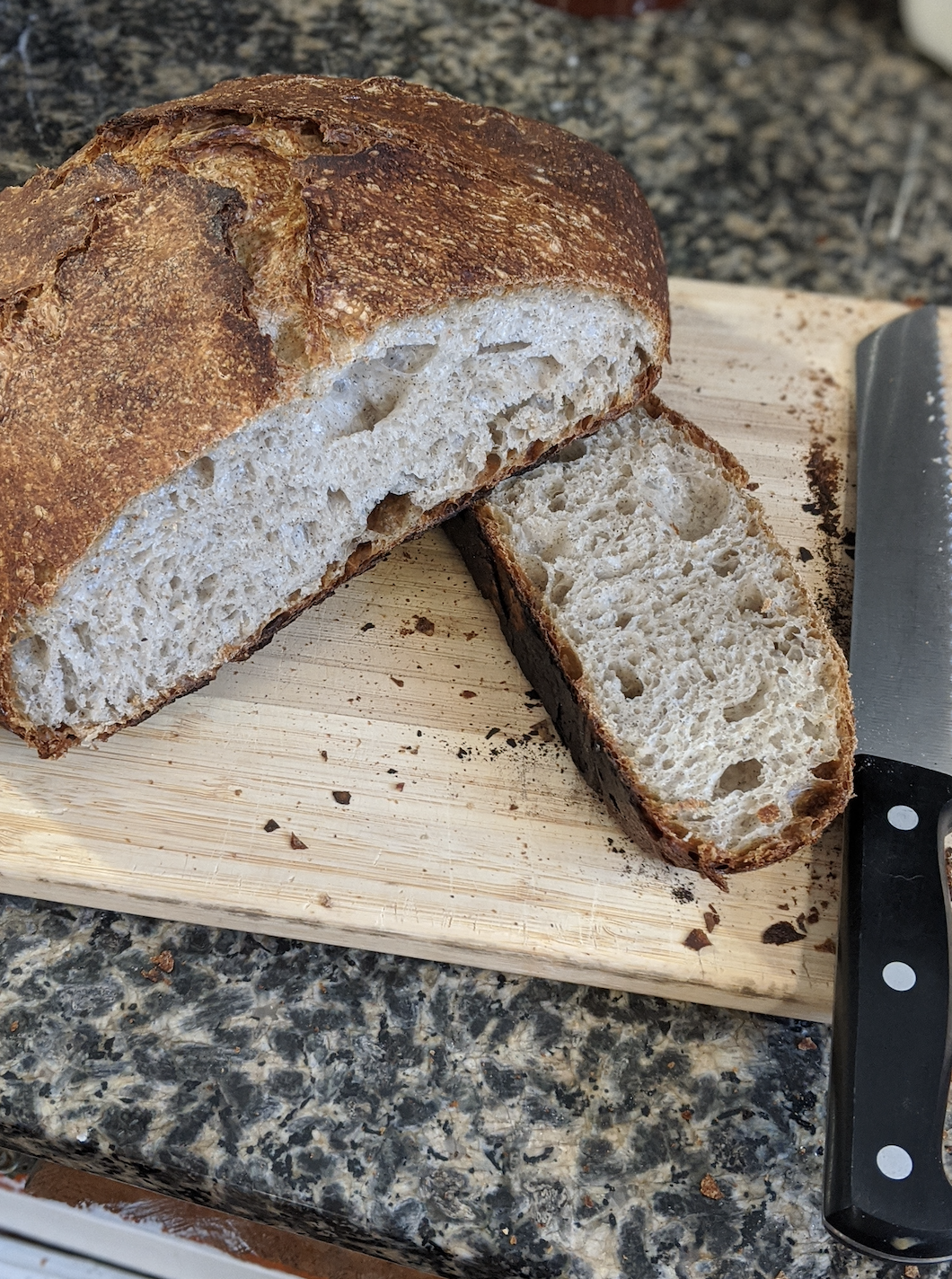Share This
When the future is uncertain and the world seems amiss, there is something therapeutic about getting out of your head and into the kitchen — rhythmically kneading out dough or inhaling the scent of freshly baked breads and pastries. NYC-based tech firm Chicory, along with anyone who has been on Instagram lately, confirms that “stress baking” is on the rise, while our friends at the Home Baking Association noted a 180-200% uptick in the demand for flour in response to the COVID-19 pandemic.
While millers and retailers work around the clock to help meet the demand for baking ingredients, we caught up over email with two baking experts to learn their tips for “stress baking” and how to deal with ingredient shortages around the country:
- Abby Clement, Whole Grain Stamp Program Manager and our own in-house baking guru
- Sharon Davis, Family and Consumer Sciences Education at the Home Baking Association
How are you holding up amidst COVID-19? What are you baking these days?
Sharon Davis: We’re holding up well — it helps that we bake all the time :) Meanwhile we’re helping with local pantries that remain open for those who cannot buy or cannot get to the store. We’re baking loaf breads, pizza crust, and basics like muffins, cornbread, soda bread, scones, pancakes, and waffles.
Abby Clement: I keep my mind busy by baking which has always been a stress reliever for me. Now with working from home I have a bit more time to try some things that have been on my ‘to bake’ list for a while. I’ve done a better job of maintaining my sourdough starter and have made some great slow fermentation, high hydration loaves with a fun mix of flours – whole grain spelt and buckwheat included. Pi day was celebrated by an old fashioned apple pie with some whole grain spelt flour thrown in the crust. Next project is to work on my will power.
We’ve been getting lots of messages from people expressing sadness that staple ingredients like flour and yeast are difficult to find right now. Do you have any thrifty tips for baking with a less-than-full selection of ingredients?
Abby Clement: If you think something may work as a substitute give it a go. You’d be surprised how well things usually turn out. Always remember Google is your friend! If there is no yeast to be found and you’re committed to making bread, no time like the present to start a sourdough starter from scratch! And don’t forget how many different types of bread there are. No yeast, no problem — there is an amazing variety of flatbreads from around the globe to experiment with. And crackers! Homemade crackers are quite the treat.
Sharon Davis: 1 packet (¼ ounce / 7 grams / 2 ¼ teaspoons) of yeast will leaven up to 8 cups (2 pounds) of flour. Temperature matters! 70-80 degrees is fine for the initial first and second fermentation. Just be more patient— this is not a “quick-rise” recipe. Slow or cold fermentations may use 1 teaspoon (or less) for 12 ounces of water and 1 pound of flour using a 5 hour or more fermentation. The flavor is wonderful though! No yeast? You can make a good daily loaf bread (Irish Soda Bread) with soda or baking powder. Bread sticks may be leavened with yeast or baking soda or baking powder— just remember the texture will be more dense with soda or baking powder (no fermentation!) and they become a “quick bread” so you must not let the batter or dough sit long before baking them — the chemical leavening will go out of the dough and they will not rise well in the oven.
What is a common misconception you hear with regard to whole grain baking?
Sharon Davis: That it’s heavy or dry. If you don’t have to adhere to gluten free, there is no reason to have a heavy product if you use enough whole wheat flour for a good structure and develop the gluten properly for the type of product you are baking. Whole grain pastry, cookies and sweet goods are somewhat more forgiving.
Abby Clement: That the only reason you would bake with whole grains is for health. I shared this misconception for a while, and never baked with whole grain because of it. All it took was a whole grain rye pie crust to change my mind forever. Refined flour is a blank canvas, it really doesn’t taste like much – so you have something tasteless accounting for a large percentage of your recipe as a whole. It’s hard to get depth of flavor when using plain all-purpose flour. But once you switch to whole grain you start to realize that there is so much more your baking has to offer. Flour becomes more than just a vessel for other ingredients, it becomes an ingredient itself, something with impact and depth. Just remember to buy smaller bags of whole grain flours as you experiment – they do not keep in the pantry as long as refined flour.
What are some of your favorite whole grain recipes to bake at home?
Sharon Davis: I like to bake yeast breads like Pilgrim Bread, Whole Wheat Every Day Bread, Oatmeal Bread, Apple Cinnamon Bread or Rolls, Carrot Streusel Coffee Cake. Soft Pretzels are another favorite, and they make great buns too. I also like baking multi-grain muffins, quick breads or pancakes. If you use our guide for Whole Grain Baking 101 you can bake whole grain rich or all whole grain with almost any recipe. Almost everything I bake is at least half whole wheat flour and often enhanced with other types of whole grains for variety — the key to good nutrition. We are very blessed in this country to be able to obtain a very wide variety of whole grain ingredients.
Abby Clement: I have a long list of things to try so I rarely make something more than once. I do have a few things on tight rotation. Whole grain pancakes and waffles, usually with some discard starter. Things crisp up so much nicer when there is starter involved! I usually use King Arthur Flour’s sourdough waffle recipe and whatever whole grain flour I have on hand. Pro tip – nuts in whole grain pancakes are next level. And for something sweet I love Joanne Chang’s chocolate chip cookie recipe – but of course I always sneak in some whole grain flour!
Ready to roll up your sleeves and start baking? Check out our Instagram stories highlight to participate in our whole grain bread bake along, or browse the recipes on our website for more ideas. [Note: This interview has been edited for length and clarity.] (Kelly)




Comments
Add a Comment